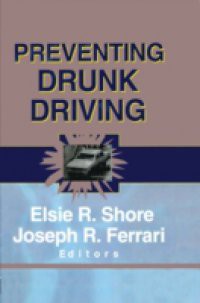Preventing Drunk Driving shows what is being done today, in research and practice, to reduce impaired driving and the fatalities and injuries it produces and to curtail the spread of this tragic social epidemic. In this informative book, you'll discover how current research and prevention programs are increasing the success of designated driver programs. You'll also find out how communities, friends, and experts are making drinkers aware of their levels of intoxication and discouraging them from driving to keep the roads safer. You'll see when intervention works, when it doesn't, and how you can be most effective as a citizen in the fight against impaired driving deaths along your own stretch of the world's highways and city streets. In Preventing Drunk Driving, you'll get up-to-date data on how researchers are identifying the most dangerous drunk driving recidivists. Also, you'll see how increased study and research have led to theoretical models of intervention, assessments of the usefulness of vehicle interlock programs, and the use of mapping to target offenders most at risk. Most importantly, you'll learn:the results of experiments designed to test methods of increasing designated drivinghow census-tract mapping can target communities prone to DWI offensesthe benefits and limitations of vehicle-interlock devices for the prevention of recidivismhow interveners may improve their chances of stopping an impaired person from getting behind the wheelways that blood alcohol concentration (BAC) feedback stations can reduce DUI incidentsGive me the keys. Friends don't let friends drive drunk. These are all sayings we've heard--but what are the scientific facts about impaired driving and its prevention in our local communities and neighborhoods? Preventing Drunk Driving analyzes the societal ill of driving under the influence of alcohol and its related death toll from a wide variety of angles.

